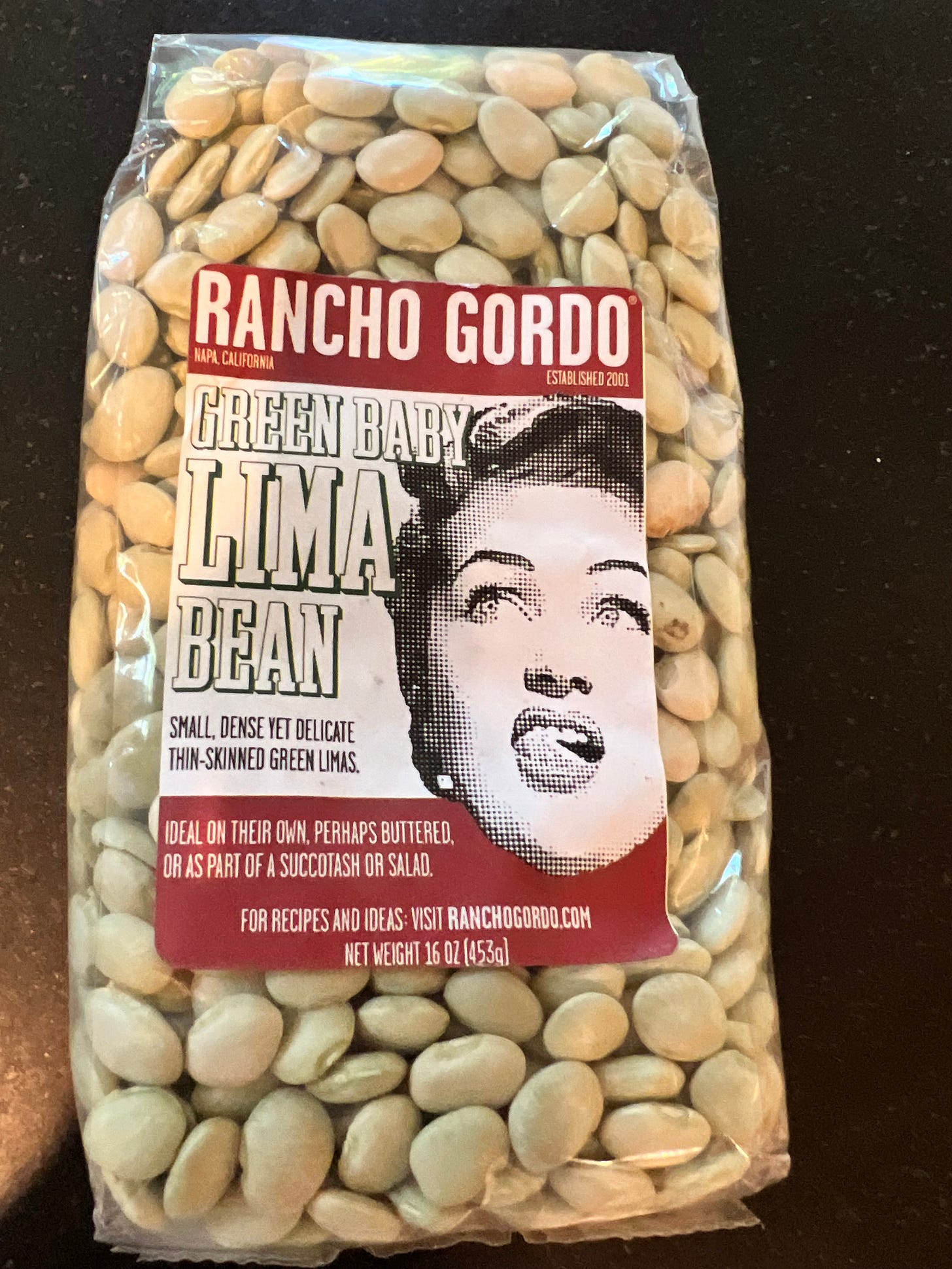Recipe developers and testers: culinary MVPs
and baby green lima beans with garlic, herbs and lemon
I woke up Sunday morning thinking about all of the yummy veggies I had to prepare along with roasting seeds and quinoa. I knew I would do most of it on Monday because the weather would be iffy and I would have some time.
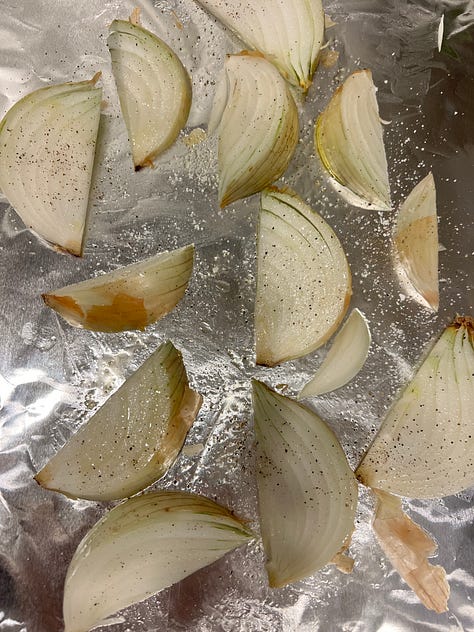
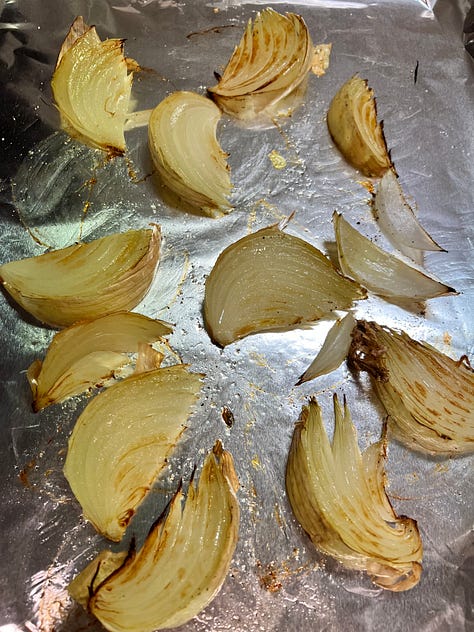
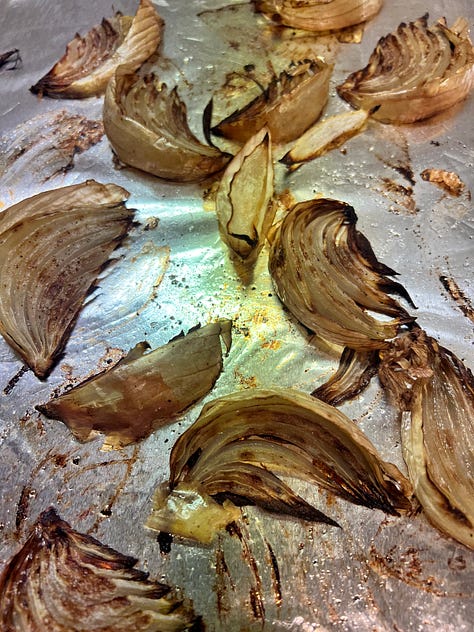
Mike and I have had a busy week. Many dinners were eaten out and entertaining at our house. We all have those weeks, I know. I woke up this morning smiling because I knew I was going to do this, this, this, this and this. I remember a time when I did not know where to start as far as prepping for the weekly meals. And then I realized there is an unsung hero, the recipe developer and tester. I don’t think anyone celebrates them but I am going to take a minute to do just that. In fact, we should have a holiday for them for goodness sake. I have always enjoyed cooking and I taught myself to cook with the help of a few published magazines and cookbooks. But they don’t magically appear, there are humans behind them.
First, I ordered a “Bon Appetit” subscription. Yes, I would receive it each month, pore over the recipes and plan what I was going to make. Around the same time, I often used Alforno’s, Cucina Simpatico, the binding is broken but it is still used 30 years later, and Julee Russo and Sheila Lukins, The New Basic Cookbook. A classic now but back then it was my “go to” for everything I wanted to learn, seasonal soups, dinner parties, cobblers. Their cookbook must’ve had over 800 recipes, it was huge. It had illustrations not pictures and had so much information to really help a newbie like myself. That book is in pieces because the binding broke but I think I still have it in a bin somewhere. Around 2000, my brother-in-law bought me my own copy of How to Cook Everything by Mark Bittman. I found the chef’s humor and no nonsense approach to food so fun. I remember reading his intro to his pancake recipe laughing. He could not believe when exactly American’s thought stirring flour, sugar and baking soda was so hard with an egg and some milk that we had to buy a box of mix and add water. His incredulity made me laugh and all of his recipes, especially the quiche, oh my word, were so good. Using simple ingredients and his sense of humor to make delicious, approachable meals which everyone enjoyed. Next, I moved on to Ina Garten because who doesn’t love a stick of butter in everything. Her recipes were amazing and her philosophy of make it ahead or prep it ahead so you can enjoy your guests. Love it!
When we learn to cook, at the beginning we are chemists. If you follow the developed recipe “to a T” it should come out well every time. These are trusted chefs, recipe developers and nobody talks, well at least I have not seen anyone talk about the hours and hours and hours it takes to create a recipe, and test it, so that newbies, like I once was, and anyone else can buy the ingredients, make the recipe, and eat a great meal. Unless you are a one-man or one-woman show on the Internet creating your own content, and then you know! The team, the time, the energy, the money spent, it’s a wonder that anything else can get done and the actual cookbook can be created. Hats off to all of the recipe creators and testers…whether a 1-person team or a100-person team, what they do so that we appreciate cooking, enjoy it and are inspired to do it, is no small feat.
As I transitioned from omnivore to eating more and more plants I found new inspiration through Angela Liddon of Oh She Glows, Kathryne Taylor, from the “Cookie and Kate” website, Jeanine Donofrio’s Love and Lemons cookbook and blog of the same name. Her cookbook was my first experience where the chapters were listed by the produce I had in my kitchen: Eggplant, zucchini, you get it. It was inspiring, a new way to approach cooking and oh so helpful. Then there is Abra Beren’s, who I feel I know. I do not know her, but I am indebted to her. Her cookbooks, Ruffage, Grist, and Pulp have made my cooking go to the next level in providing courage to be creative and use what I have in my kitchen now to make many different flavor profiles. Her writing is relatable, her interviews with farmers make you want to visit their midwest farms, her resources that she shares have made these my latest culinary reference books. At the same time if I was a new cook I could read her books and also follow each recipe exactly and know they would come out perfectly. She makes me want to put my hands in the dirt, go to the farmers market (we have been going for years but) now I am asking questions of the farmers…all inspired by her writing and her work. Thank you.
I find that the way I share recipes most likely work for those cooks who are comfortable in the kitchen. Often I tell you to add as much as you like of one ingredient, or perhaps cut it in half. Now that I am writing this newsletter today I realize a newer cook in the kitchen may go bats from reading my process in making a recipe. But for the seasoned cook I hope there have been a few ideas that have inspired you and that is what I think I am best at. I often do not create my own recipes from scratch. I mean, there are a few recipes that I have made my own and people ask me to make them for parties but I am most comfortable sharing the work of other recipe developers, chefs and cookbooks and telling you from where I have adapted my recipe. This way you have the original and what I did to make it more to my taste or based on what I had in my fridge or pantry.
And to all of the recipe developers, testers and cookbook writers and creators, we see you and appreciate all of the long hours you have spent so that we may enjoy our families and friends, sitting around the table, eating your creations. Cheers!
Recommended Recipe
Green Baby Lima Beans with garlic, herbs and a squeeze of lemon
I made a pound of Rancho Gordo green baby limas the Rancho Gordo way and brought them to Sunday Supper at my sisters house. They were delicious right out of the pot with a bit of salt and pepper and went well with the lamb, cod fish, grilled carrots with a limey sauce, potatoes and salad.
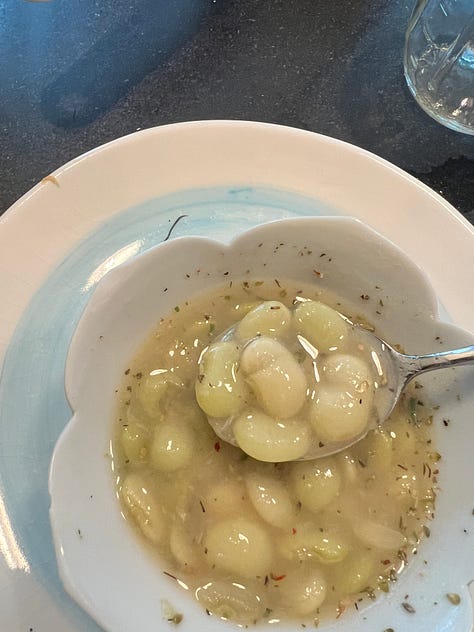
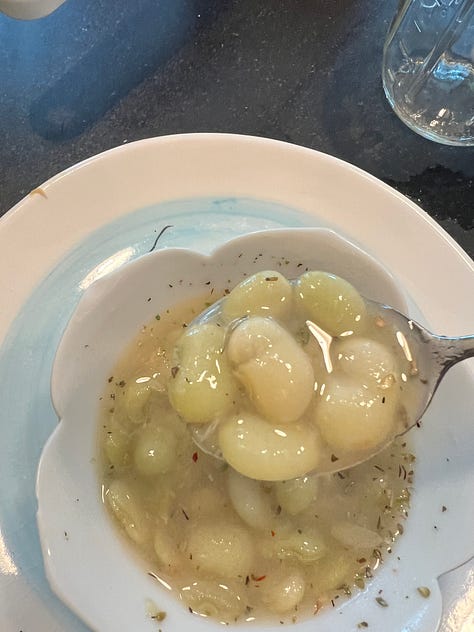
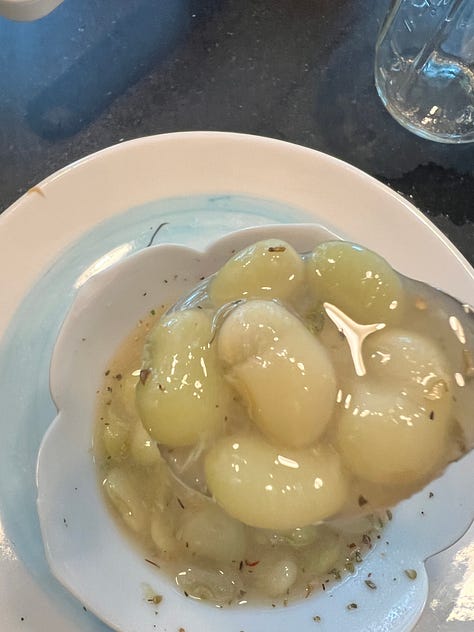
I probably had about two cups of beans left over. They are quite soft so some of them disintegrated into the pot liquor making for a thicker broth. I thought the leftovers would taste great with some sautéed garlic and herbs—I seem to be having a love affair with flat leaf parsley lately. This is not so much a recipe but flavors I like together. Therefore, it is not adapted from any cookbook or blog because like I said it is not really a recipe. For those of you who have been cooking for a while you could make this just by the title. For those of you who want a recipe because it is helpful, I have written out what I did below.
Before we begin lets take a peek at the nutritional profile of the baby limas.
Nutritional Profile
Here’s what you get in a 1/2 cup serving (about 88 grams):
Calories: 108
Protein: 6 grams
Fiber: 4 grams
Fat: 0.5 grams
Carbohydrates: 20 grams
Folate: 20% of the Daily Value (DV)
Iron: 14% of the DV
Magnesium: 12% of the DV
Potassium: 10% of the DV
Vitamin C: 5% of the DV
Lima beans are an excellent source of complex carbohydrates and provide a good amount of protein and fiber as well as vitamins and minerals for your overall health.
Ingredients
1 1/2 cup of cooked baby green limas (with pot liquor-the broth) or 1, 15 oz can of butter beans (rinsed)
1 large or 2 small cloves of garlic minced
1/4 cup of flat leaf parsley roughly chopped (Can use another herb of choice)
1 T of fresh thyme
S & P to taste
1 T of veggie stock or olive oil
1/4 - 1/2 C of veggie stock (only needed if using canned beans)
optional: fresh chives snipped over the top, squeeze of lemon because everything tastes better with a squeeze of lemon.
Heat up your saute pan over medium high for 1-2 minutes and add the 1 T of veggie stock (or olive oil). Add your garlic stir for 30 to 60 seconds. Keep stirring so the garlic does not burn until it’s golden. Add your fresh thyme, give a quick stir, then the beans, along with their broth. (If you are using canned beans, add approximately 1/4 cup of the veggie stock) Stir and heat up for about 5 minutes. Add a pinch of salt and some cracked black pepper. Add the parsley, continue stirring slowly for another minute. If the veggie stock reduces, continue to add in the other 1/4 cup of veggie stock. Once heated through, remove from the heat. You can scoop into a bowl and eat it as is with some crusty bread, with a little salt and pepper, or you can pour over rice or quinoa. And don’t forget to squeeze some lemon over the top.
I enjoyed a small bowl on its own. Simple and delicious. If you make lima beans, or another dish inspired by this please leave me a comment. Thank you.
Remember, start with beans!
Contact
If you have any questions on integrating beans consistently for gut health now and into the near future, please email me at Denisemancieri1@gmail.com. Feel free to comment below if there are topics you would like to see.
Please share this newsletter with others if you find it may assist them in adding beans to their diet. Or click the heart, below left, so I know you were here. Thank you!
Note: I am not a doctor. I am a teacher and an educator with an earned doctorate in educational leadership. I enjoy research and I can distill large amounts of information into easily understood and digestible pieces allowing people to understand what is happening to their body and possible steps to reverse it with food as medicine. I have healed my own GI issues through choices with food. I followed Karen Hurd’s bean protocol diet, I meditated and still do and I healed. I feel compelled to be in service and educate others as the more people eating beans, alongside a healthy diet and sharing their stories the more people will live a healthier existence. Joy, peace and freedom abound. Please see your doctor and discuss nutritional options before you change any course of action with your health.





